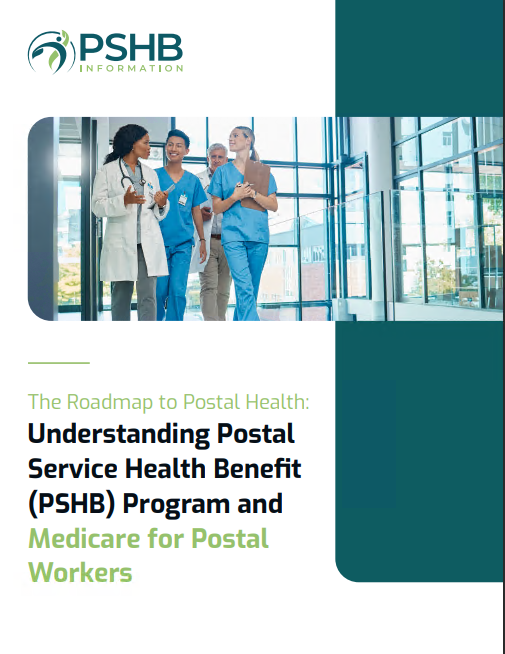Key Takeaways
-
The Postal Service Health Benefits (PSHB) program offers comprehensive coverage tailored specifically for USPS workers and retirees, including medical, dental, and vision care.
-
Comparing PSHB benefits with other health plans highlights distinct advantages, such as government contributions, Medicare integration, and unique cost-sharing structures.
Understanding PSHB Benefits at a Glance
The Postal Service Health Benefits (PSHB) program is designed to meet the unique needs of USPS employees, retirees, and their families. As of January 1, 2025, this program replaces the Federal Employees Health Benefits (FEHB) coverage for USPS members, creating a dedicated healthcare solution tailored to your profession. If you’re part of the USPS family, it’s essential to understand what this program offers and how it compares to other health plans.
What Does the PSHB Program Cover?
PSHB plans provide a wide array of benefits aimed at ensuring you and your family have access to comprehensive healthcare services. These benefits include:
-
Medical Coverage: PSHB offers in-network and out-of-network coverage for essential services like doctor visits, hospital stays, preventive care, and more. In-network services often come with lower copayments and coinsurance rates.
-
Prescription Drug Coverage: Included through Medicare Part D Employer Group Waiver Plans (EGWPs), PSHB plans feature capped out-of-pocket costs of $2,000 annually for prescription drugs, ensuring affordability.
-
Dental and Vision Benefits: Coverage includes routine exams, cleanings, glasses, and contact lenses, often with no waiting periods for these essential services.
-
Mental Health Services: Access to counseling, therapy, and psychiatric care is included in most PSHB plans.
-
Wellness Programs: Many plans offer resources to support a healthy lifestyle, such as fitness incentives and telehealth options.
Cost Sharing in PSHB Plans
Understanding cost-sharing structures is key to making informed decisions about your healthcare. Here’s a breakdown of the primary cost-sharing features of PSHB plans:
-
Premiums: The government contributes approximately 70% of your premiums, making PSHB plans a cost-effective choice compared to private options.
-
Deductibles: Low-deductible options start at $350, while high-deductible plans may reach $2,000 annually. Choosing the right deductible depends on your healthcare needs.
-
Copayments and Coinsurance: Copays for primary care range between $20 and $40, while specialist visits typically cost $30 to $60. Coinsurance rates vary, with in-network services generally costing less.
-
Out-of-Pocket Maximums: Caps are set at $7,500 for Self Only coverage and $15,000 for family plans. These limits help protect you from significant financial burdens during medical emergencies.
How PSHB Benefits Compare to Other Health Plans
While PSHB plans are specifically designed for USPS workers and retirees, it’s worth comparing them to other health plans to better understand their unique features and advantages.
Government Contributions
PSHB stands out due to the substantial government contribution to premiums. Private health plans typically lack this level of support, resulting in higher monthly costs for enrollees. This contribution significantly reduces your financial burden while ensuring access to high-quality healthcare.
Medicare Integration
For Medicare-eligible retirees, PSHB plans integrate seamlessly with Medicare Part B. This combination reduces deductibles and copayments while offering additional benefits such as lower prescription drug costs. Private plans may not offer the same level of integration, leaving retirees to manage higher out-of-pocket expenses.
Comprehensive Coverage
While many private plans offer extensive coverage, PSHB plans include features specifically tailored to USPS workers and retirees. These include employer-sponsored wellness programs and streamlined access to services through the federal system.
Cost Predictability
PSHB plans cap out-of-pocket costs for prescription drugs at $2,000, ensuring predictability and affordability. Many private plans do not have such caps, potentially leading to significant financial strain for those with high medication needs.
Making the Most of PSHB Benefits
To get the most value from your PSHB plan, it’s crucial to stay informed and proactive about your healthcare needs. Here are some tips to help you maximize your benefits:
Review Your Plan Annually
Each year, you’ll receive an Annual Notice of Change (ANOC) detailing updates to your plan’s premiums, benefits, and cost-sharing requirements. Reviewing this document ensures you remain aware of any changes that may impact your healthcare choices.
Coordinate with Medicare
If you’re Medicare-eligible, enrolling in Medicare Part B is required to maintain PSHB coverage. Take advantage of this integration to minimize out-of-pocket costs and enhance your coverage.
Use In-Network Providers
Choosing in-network providers helps you save money on healthcare services. These providers have agreements with PSHB plans to offer services at reduced rates, making them a cost-effective choice.
Leverage Wellness Resources
Many PSHB plans include wellness incentives, such as discounted gym memberships, telehealth services, and preventive screenings. Utilizing these resources can help you stay healthy while reducing overall healthcare costs.
Important Timelines and Enrollment Periods
Staying on top of enrollment periods is essential to ensure uninterrupted coverage. Here are the key timelines for PSHB participants:
-
Open Season: Occurs annually, typically from early November to mid-December. During this period, you can enroll in or make changes to your PSHB plan.
-
Qualifying Life Events (QLEs): Events such as marriage, divorce, or the birth of a child allow you to make changes to your coverage outside of Open Season.
-
Medicare Enrollment: If you’re turning 65, you have a 7-month Initial Enrollment Period (IEP) to enroll in Medicare Part B and ensure seamless integration with your PSHB plan.
PSHB: A Reliable Choice for USPS Employees and Retirees
The PSHB program represents a significant step forward in providing USPS workers and retirees with comprehensive healthcare coverage. Its tailored benefits, government contributions, and Medicare integration set it apart from other health plans. By staying informed and making strategic choices, you can ensure that your PSHB coverage meets your healthcare needs while keeping costs manageable.









